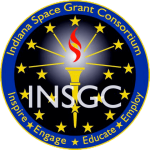WISCONSIN SPACE GRANT SUPPORTS “LAUNCHING EXCELLENCE IN THE LAB”
Feb 21st, 2024
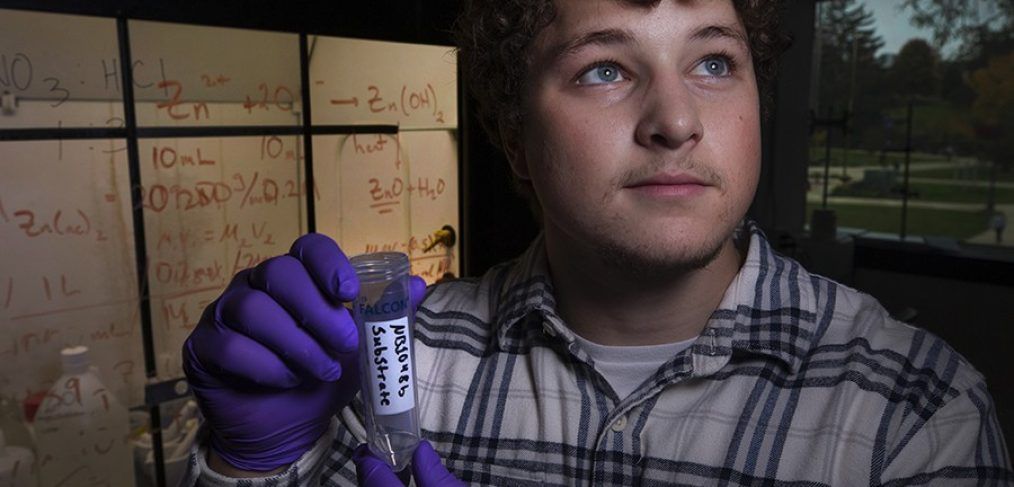
From stargazing as a child in his hometown of Evansville to working as an undergraduate researcher inside the University of Wisconsin-Whitewater’s Upham Hall, Nick Barmore has always had an interest in space.
That passion, combined with the support of UW-Whitewater’s chemistry department, earned Barmore a prestigious $4,000 grant from the National Aeronautics and Space Administration (NASA) and Wisconsin Space Grant Consortium (WSGC) as part of the Undergraduate Research Awards Program.
Watch the YouTube video and read the full story on uww.edu.
Written by Chris Lindeke | Video by Kyle Winter | Photos by Craig Schreiner
SOUTH CAROLINA SPACE GRANT FUNDS STUDENT’S BATTERY RESEARCH
Feb 15th, 2024
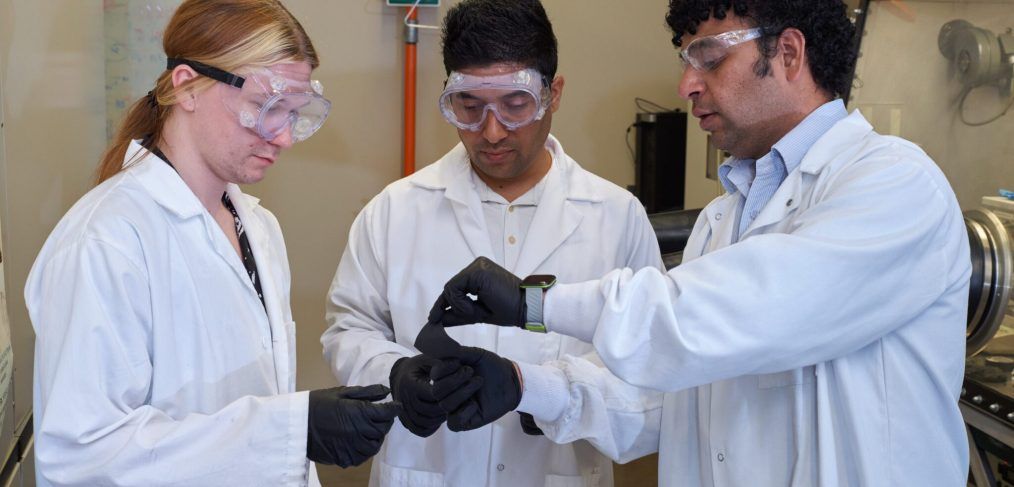
NASA is on the quest for a better battery — one that is lighter, longer lasting and able to survive the extreme temperatures found in space — and a Clemson graduate student’s research could help lay the groundwork.
Alan Rowland, a graduate student in the Clemson University Department of Physics and Astronomy, has received a prestigious NASA SC Space Grant fellowship to explore the role nitrogen plays in sulfurized polymer-based lithium-sulfur batteries.
Read the full article on News.Clemson.edu.
Author Credit: Cindy Landrum
Image Credit: News.Clemson.edu.
RHODE ISLAND SPACE GRANT FUNDS STUDENTS’ MARS RESEARCH
Feb 10th, 2024

If you need to find Jillian Sylvia ’24 or Jenavieve Lyon ’26 this summer, look no further than Bryant’s research labs. The two School of Health and Behavioral Sciences students received $7,300 each from the NASA Rhode Island Space Grant Consortium for two projects and are working to develop technologies and lab protocols meant to help up-and-coming space programs.
Sylvia, a Biology major and seasoned summer research fellow, is creating new techniques to characterize climate on Earth’s past and present landscapes. The methods she develops could eventually be applied to Mars rock samples to look at the planet’s preservation.
Meanwhile, Lyon — an Environmental Science major engaging in her first summer research experience — is using rock and sedimentary samples to study past climate changes and apply this information to the climate changes humans are experiencing today.
Read the full article on News.Bryant.edu.
Author Credit: Emma Bartlett
Image Credit:
HOW A NASA-SUPPORTED ROBOTICS PROGRAM IS PREPARING STUDENTS FOR STEM CAREERS – HAWAII SPACE GRANT CONSORTIUM
Nov 25th, 2022
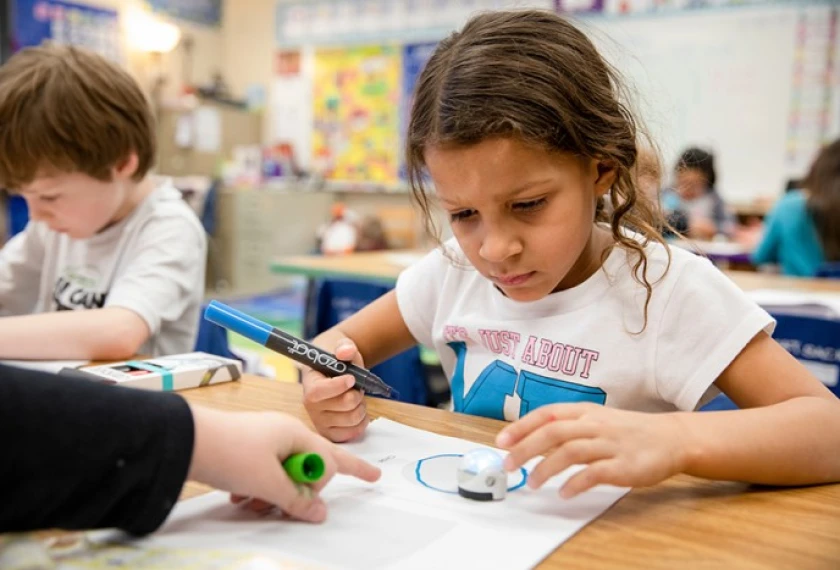
Hawaii is trying to prepare its K-12 students to fill the massive shortages of jobs in STEM-related fields.
The Hawaii Space Grant Consortium, a community educational program supported by the National Aeronautics and Space Administration, has partnered with schools across the state to implement robotics in the classroom.
“We’re trying to build this pipeline from K-12 and eventually have the students go on to college to build robotics or satellites, and eventually, hopefully, work at NASA as engineers,” said Adria Fung, robotics engineering education specialist at the consortium, during a session at the 2022 International Society for Technology in Education conference.
FLYING BEFORE WALKING: THE CU TRAILBLAZERS – A PARTNERSHIP BETWEEN NASA, WISCONSIN, & COLORADO SPACE GRANT CONSORTIA
November 23rd, 2022
Test Launch day
"Going in 5... 4... 3... 2... 1..." The eight-foot tall rocket stood, motionless.
"... Come on Chungus." the rocketeer murmured into the microphone.
With an ear-shattering roar, Chungus burst into the sky, 500 hundred feet, 1,000 feet, over 3,000 feet! A speck in the brilliant blue.
The team erupted, screaming wildly as the rocket flew.
"YES!" Reign Pagaran yelled, leaping into the air, held aloft, it seemed, by the joy of this moment. The Trailblazers did it, they flew before they walked.
Nine months to launch
It was Evie Clarke (BioMedEngr'24) who first saw the Wisconsin Space Grant Consortium's First Nations Launch (FNL) display at the AISES national convention in September of 2021. FNL is a high-powered rocketry competition focusing on Native student participation. It had been Clarke's dream to participate for years.
"Evie saw the booth. The way these things work, Evie points and says, 'Reign, we've got to do this,'" Pagaran (MechEngr'25) said.
The Trailblazers, as the CU Boulder team named themselves, were all from different tribes. No one had high-powered rocket experience. The members were Clarke, Pagaran, Alexa Martinez (ChemBioEngr'23), Jadon Shortman (ChemBioEngr'23), Annalise Hildebrand (MechEngr'23) and Kaylan Madrid (AeroEngr'25). Brittany Nez (MAeroEngr'22) acted as graduate student advisor.
8…7…6…5... months to launch
From September to January, the Trailblazers had limited access to rocketry equipment. They first had to prove their rocketry understanding through a 40-60 page paper, presentations to FNL and taking on leadership roles.
Shortman became the structural and safety expert.
"This has been one of the best experiences I've had at CU Boulder," he said. "We didn't know how to do it, but we had to get it done, so I had to learn and figure it out. From an outside perspective, all of this looks so complicated, but when you really break it down, if you're willing to put in the time, almost anyone could do it."
Still, there were people who cautioned the team to not be too optimistic. 'You have to walk before you run' was a refrain from other rocketeers.
5…4…3... months to launch
The Trailblazers found allies in graduate students and the Colorado State Space Consortium, which provided funding, and the CU Sounding Rocket Laboratory, which gave them workspace and the support of Kenny Olavarria (AeroEngr'23), a rocketry student mentor.
Nez, the team's graduate mentor, said she bonded with the team over their hours of working together.
"First Nations Launch has been a big community base for me,” Nez said. “Moving to Colorado, it was really nice to meet very like-minded people. We were all bonded not only through engineering, but through culture. All of us are Native American and all of us enjoy rocketry and aerospace."
2…1… months to launch
In January, the massive eight-foot K-class motor rocket kit was delivered. The team began feverishly constructing the subsystems to lift it into the air. They nicknamed the rocket Big Chungus, after a meme of a portly redrawing of Bugs Bunny.
As team lead, Pagaran set up working groups. Rather than tackling each problem centrally, the team leads were trusted to do the best they could to find a solution, then come back to the team with suggestions.
"We were meeting twice a week or more for several hours constructing the rocket," Martinez said. As avionics team lead, she learned to control the rocket's electronics through code.
Martinez said that she, like Shortman, realized how capable she was through the project.
"You can go into something, not knowing anything, and it's still gonna be okay," she said.
NASA CAUGHT THE SUN SMILING DOWN ON US, BUT THE GRIN COULD SIGNAL A SOLAR STORM
October 29th, 2022
NASA's Solar Dynamics Observatory (SDO) this week captured an image of the sun in ultraviolet light featuring three dark patches that look like a smiling face — a face that could signal a solar storm with problems for Earth.

The National Oceanic and Atmospheric Administration's Space Weather Prediction Center issued a minor geomagnetic storm watch effective for Saturday. While geomagnetic storms can create beautiful aurora in the sky, they can also disrupt GPS and create harmful currents in the power grid and pipelines.
Hubble's 1995 image of a star nursery was amazing. Take a look at NASA's new version
The dark patches, known as coronal holes, are regions where solar wind escapes more quickly and readily into space, making these regions cooler. These winds can clock up to 1.8 million miles per hour, according to Exploratorium, a museum in San Francisco.
People capitalized on the opportunity to make memes and alterations of the smiling sun to look like a jack-o'-lantern or the Stay-Puft Marshmallow Man from the Ghostbusters franchise.
NASA took photos of the sun back in 2014 that also resembled a jack-o'-lantern, titling the photos "Pumpkin Sun." The regions that made up the jack-o'-lantern's face were active regions of the sun, marking disturbances in the magnetic field that produce solar storms like solar flares and coronal mass ejections.
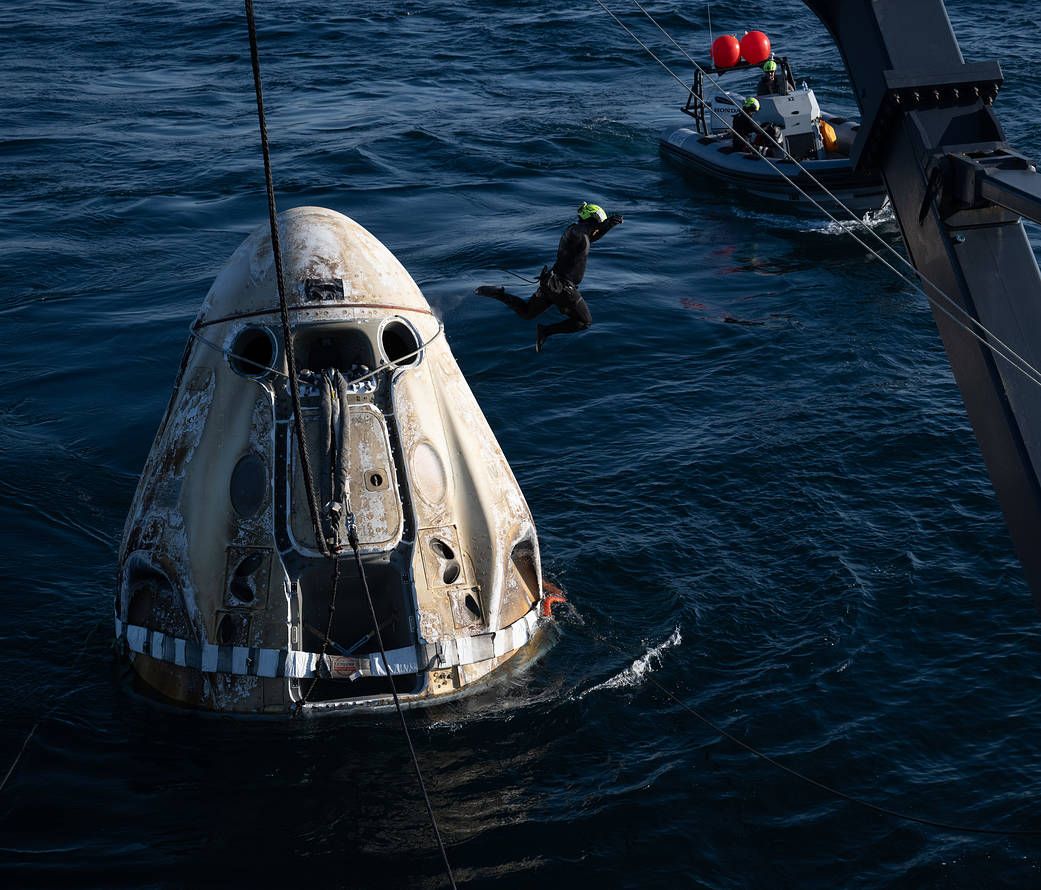
After 170 days in orbit, NASA astronauts Bob Hines, Kjell Lindgren, and Jessica Watkins and European Space Agency astronaut Samantha Cristoforetti safely splashed down Friday, Oct. 14, 2022, off the coast of Jacksonville, Florida, completing the agency’s fourth commercial crew mission to the International Space Station. Teams aboard SpaceX recovery vessels retrieved the spacecraft and astronauts.
Hines, Lindgren, Watkins, and Cristoforetti traveled 72,168,935 miles during their mission and completed 2,720 orbits around Earth. Lindgren has logged 311 days in space over his two flights, and with the completion of their flight, Cristoforetti has logged 369 days in space on her two flights, making her second on the all-time list for most days in space by a woman. The Crew-4 mission was the first spaceflight for Hines and Watkins. Throughout their mission, the Crew-4 astronauts contributed to a host of science and maintenance activities and technology demonstrations.
Learn more about NASA’s Commercial Crew program.
Image Credit: NASA/Bill Ingalls
Artemis Updates
Artemis 1 launch plans slip again.
PARIS — Days after NASA proposed to make its next attempt to launch the Artemis 1 mission on Sept. 23, the agency changed course and pushed back the launch.
At a Sept. 8 briefing, NASA said it was tentatively planning to fly the Space Launch System and Orion spacecraft as soon as Sept. 23, with Sept. 27 as a backup launch date. That scheduled depended on completing and testing repairs to seals in liquid hydrogen lines that attach to the rocket’s core stage, as well as getting approval from the Eastern Range to extend the certification of the flight termination system (FTS) on SLS.
Author Credit: Jeff Foust
UPDATE on Postponed Launch:
“If all goes according to plan, Artemis 1 will launch from Pad 39B at NASA’s Kennedy Space Center (KSC) in Florida during a two-hour window that opens at 2:17 p.m. EDT (1817 GMT). You can watch it here at Space.com when the time comes, courtesy of NASA.”
Source: Space.com
(CNN) For the first time in 50 years, a spacecraft is preparing to launch on a journey to the moon.
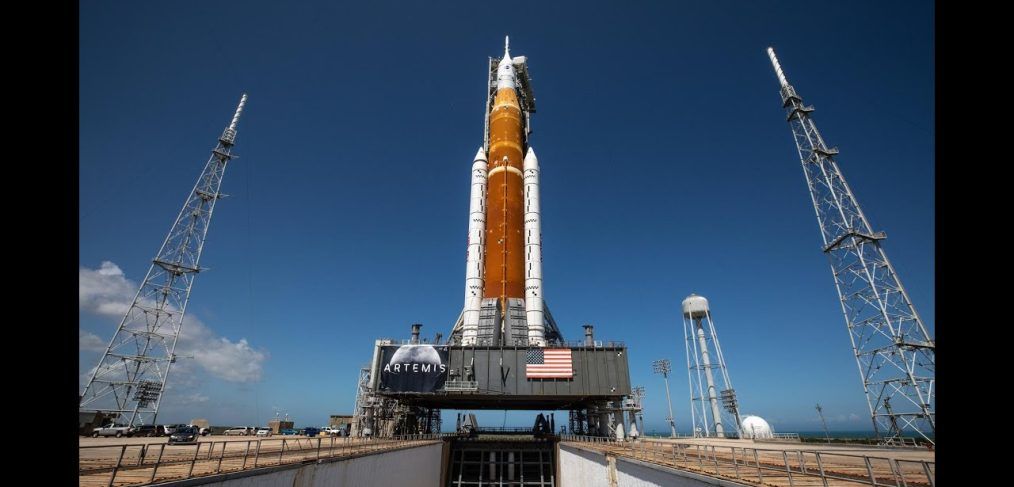
HOW TO WATCH THE ARTEMIS I MISSION LIFT OFF TO THE MOON
August 28th, 2022
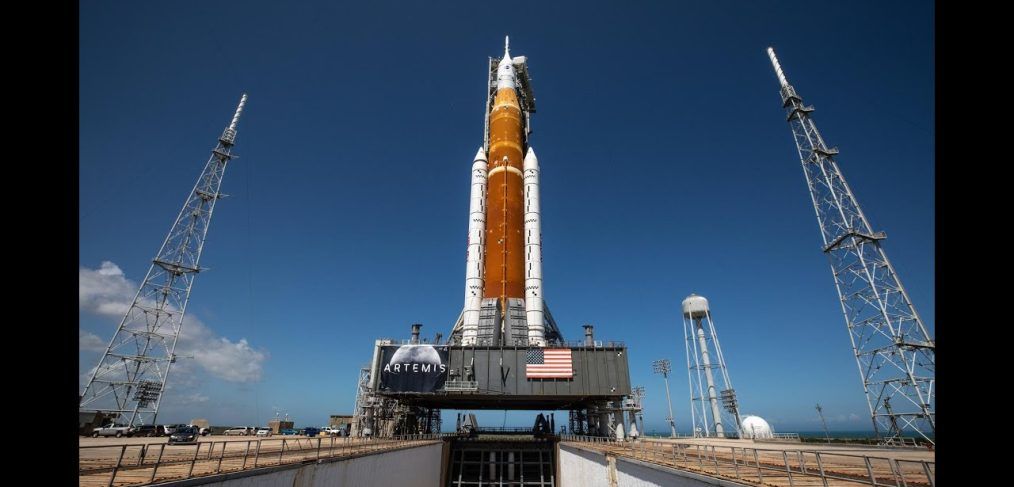
(CNN) For the first time in 50 years, a spacecraft is preparing to launch on a journey to the moon.
MUSLIM WOMEN OF NASA: TAHANI AMER TAKING ON THE LEAD
August 17th, 2022
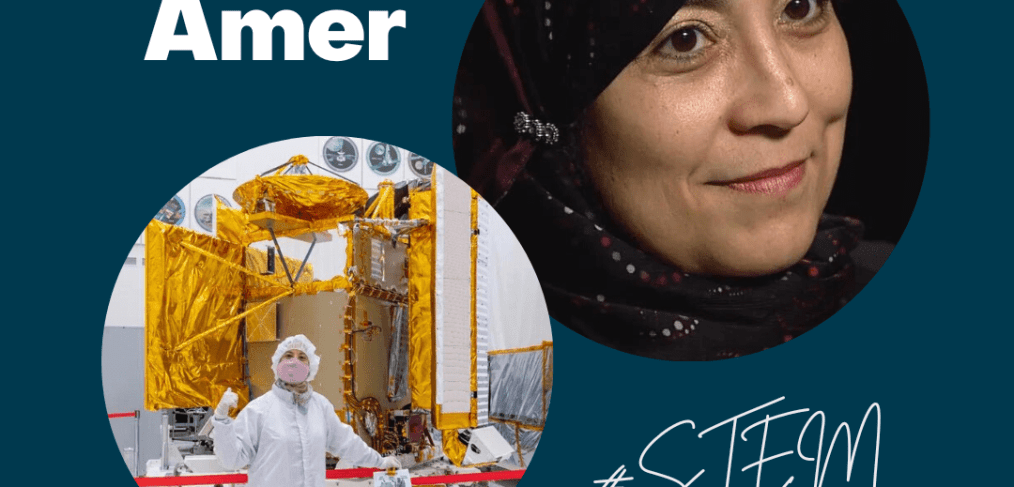
Growing up in the suburbs of Cairo and watching her father fix his car’s engine, little Tahani Amer discovered her unwavering passion for engineering.
Getting married at the age of 17 and still chasing her dreams with all the growing responsibility — even passing her first advanced calculus class with an “A” without being acquainted with English, this Muslim woman has been defying the odds since the second she stepped into the U.S. With her three simple yet empowering principles, Amer has become one of the leading Muslim women that are laying a solid foundation for many Muslim girls to unapologetically break into STEM and chase their dreams.
As we head into Muslim Women’s Day, we sat with Amer to talk about her journey as one of the Muslim women of NASA: how she got there, what inspired her to pursue her career path, and how she currently navigates her life as the Program Executive for the Earth Science Division in the Science Mission Directorate at NASA Headquarters.
Muslim Girl: How did you end up working at NASA?
Tahani Amer: NASA is my dream job. I have been working at NASA for over 30 years. I started when I was an undergraduate at Old Dominion University in Norfolk, VA. I collaborated with NASA during my senior research project. It was a great opportunity and an exciting experience to work with the best talent in the world to advance aeronautics and technology.
The Virginia Space Grant Consortium supported my entry into NASA programs by providing grants to excelling women engineers and scientists. I was the first woman to be selected for the program. After I successfully completed my project and graduated, I applied for a job at NASA.
WISCONSIN SPACE GRANT LEADS FIRST NATIONS LAUNCH
August 4th, 2022
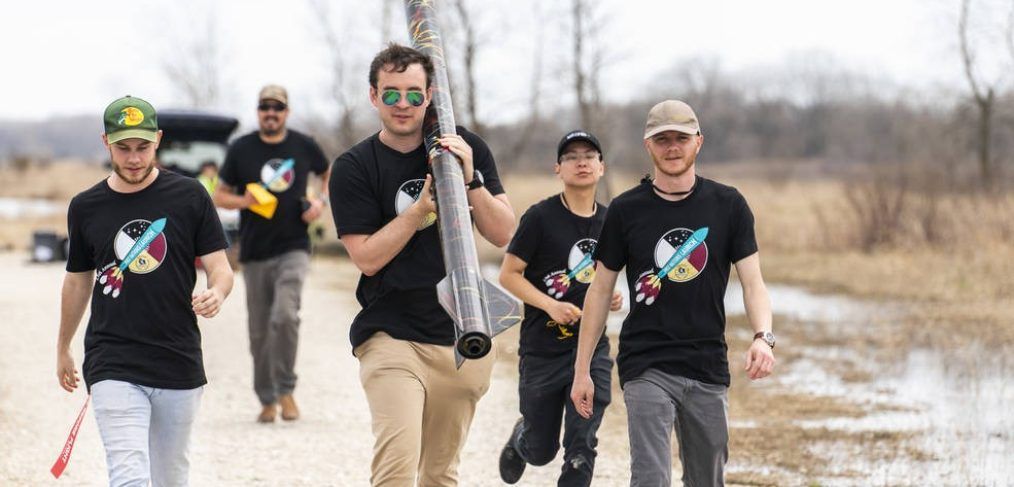
The NASA First Nations Launch (FNL) competition, an Artemis Student Challenge, offers students from Tribal Colleges and Universities (TCUs), Native American Serving Nontribal Institutions (NASNTIs), and schools with American Indian Science and Engineering Society (AISES) chapters the opportunity to demonstrate engineering and design skills through high-powered rocketry.
From April 22-24, the Wisconsin Space Grant Consortium, which implements FNL on behalf of NASA, hosted the activity’s first Launch Weekend since 2019 at Carthage College in Kenosha, Wisconsin. In attendance at this 13th annual event were nearly 60 students from 13 schools around the country who represented 25 tribal organizations.
“FNL provides a great way for NASA to engage Native American students, who are often absent from national discussions on science, technology, engineering, and mathematics (STEM) underrepresentation,” said Shanessa Jackson, FNL lead at NASA’s Kennedy Space Center. “This event delivers life-expanding experiences to students who might not otherwise have the opportunity, including the first chance to engage the outside world in some cases.”
FNL 2022 called for faculty advisor-led teams of undergraduate students to conceive, design, fabricate, and fly dual deploy high-power rockets within three challenges with various technical requirements. For the full list of 2022 results, click here. Key highlights include the following:
- Moon Challenge Winner: University of California, Davis (second year in a row)
- International Division Winner: Queen’s University
- Mars Engineering Challenge Winner: Northern Arizona University
- Altitude Award: University of North Carolina, Pembroke
- Outreach Award: Northern Oklahoma College (a rookie team)
This year’s overarching competition theme was flight dynamics. The Moon Challenge required a GPS data logger onboard and an apogee of 3,500 to 4,000 ft., in addition to verifying stability and creating a 3D reconstruction of the trajectory of the flight. The Mars Engineering Challenge required a cold gas thruster system, gyroscope sensor, and an external camera – with the rocket maintaining a roll rate of 120-240 rpm for 3 seconds and reaching an altitude range of 3,500 to 4,000 ft. The Gateway Challenge required a design from a list of possible kit combinations and launch to an altitude of 2,500 ft.
“In addition to teams returning to Wisconsin for culture, community, curriculum, and competition, we introduced a new challenge and saw great levels of participation in terms of overall numbers and variety of schools,” added Christine Bolz, who manages the implementation of FNL at Carthage College. “We had a significant increase in Tribal and Native American Serving Institutions and those schools performed well, which is evident in the awards – with NASNTIs Northern Arizona and University of North Carolina both winning top awards.”
NASA officials in attendance included Torry Johnson, acting deputy associate administrator for STEM Engagement Programs, and Reagan Hunter, special assistant for the Office of Legislative and Intergovernmental Affairs. The weekend events featured a blessing by Dr. Bret Benally Thompson (White Earth Band of Ojibwe Tribe) from the AISES Council of Elders and a keynote address by James Wood (Osage Nation and Loyal Shawnee) who is the chief engineer of the Launch Services Program at Kennedy. The pool of Native American NASA and industry judges for the competition also included four FNL alumni who completed their STEM degrees and became engineers in the aerospace field.
FNL is a NASA Minority University Research and Education Project (MUREP) effort that supports the White House initiative on TCUs by engaging these organizations as well as directly involving students. MUREP, which is administered by NASA’s Office of STEM Engagement, provides assistance to MSIs such as TCUs in their efforts to recruit and retain underrepresented and underserved students into STEM fields. FNL also enables unique engagement with Native American communities and encourages students to pursue education and careers in STEM. Teams conduct outreach within their communities, serving as role models to inspire the next generation of explorers.
NASA’s Artemis Student Challenges introduce students to topics and technologies critical to the success of the agency’s program to land the first woman and first person of color on the Moon. Through the Artemis Student Challenges, students test and strengthen their skills for future mission planning and crewed space missions to other worlds.
FNL is facilitated by the Wisconsin Space Grant Consortium, managed by the Office of STEM Engagement at Kennedy, and funded by NASA MUREP. The Office of STEM Engagement uses challenges and competitions to engage the future technological workforce and stimulate innovation in technologies that benefit NASA and the Nation.
WYOMING SPACE GRANT SUPPORTS CENTRAL WYOMING COLLEGE STUDENT TRIP TO MOUNT EVEREST
July 21st, 2022
Throwback Thursday to a Spring 2022 Student Research Trip!
JACKSON, Wyo. — Central Wyoming College is sending indigenous students to Mount Everest base camp to conduct climate research.
Students, Jada Antelope, Aidan Darissa Hereford, Red Thunder Spoonhunter,
Antoine Day, and one non-Indigenous student Ryan Town, along with professor Jacki Klancher set off on their trip today, April 26.
Read the full Buckrail article online here.
Author Credit: Lindsay Vallen
How the son of sharecroppers helped send the world's most powerful telescope to space
July 15th, 2022
NASA released the first batch of images from the James Webb telescope this week, wowing the world with never-before-seen views of ancient and distant galaxies.
The approximately $10 billion telescope was decades in the making, a partnership with the European Space Agency and the Canadian Space Agency that involved some 20,000 collaborators across 29 countries and 14 U.S. states. It finally launched in December 2021 after a long string of setbacks and delays that led some astronomers to fear it might never get off the ground.
Gregory Robinson wasn't one of them. The career NASA employee was brought in as director of the James Webb Space Telescope Program in March 2018 to help get the project back on the rails, over the finish line and into space. Despite the challenges, he tells Morning Edition's Steve Inskeep that he never doubted whether it would work.
"As we moved closer to launch and even as we launched, I never had a concern on the outcome," Robinson says. "My biggest concern was, 'Let's get on with it already, get to the launch site and get it off the ground.' "
While Robinson credits the work of many others in making the telescope a success, he's received special recognition for the role he played — including being recognized as one of TIME's most influential people of 2022.
In his tribute, NASA astrophysicist and Nobel laureate John Mather wrote that Robinson "channeled the forces of human nature and ingenuity," from NASA and Congress to foreign space agencies and aerospace companies.
"Our teams orbit around Greg, because we trust him to ask questions and understand our concerns and respect our opinions," Mather wrote. "He makes it look easy, but I can barely imagine how he does it, and I admire him tremendously for it."
Robinson — who most recently served as the deputy associate administrator for programs in NASA's Science Mission Directorate — has worked on several high-profile missions and held numerous leadership roles since joining the space agency in 1989.
But Robinson, the ninth of 11 children born to tobacco sharecroppers in rural Virginia, says he didn't exactly grow up dreaming about space ... other than watching the moon landing.
"I often refer to Webb as our Apollo moment today," he adds. "But space was not high on my list."
NASA’s New Solar Sail Could Soon Navigate in Space
May 30th, 2022
Scientists say the flashy tech could help them study the sun’s polar regions.
A project to develop an innovative solar sail has advanced to the final leg of a NASA research program. Phase three of the Innovative Advanced Concepts program (NIAC) will allow researchers to continue exploring and developing a diffractive solar sail for two years with a funding award of $2 million, reports George Dvorsky for Gizmodo. This award could push the solar sail concept, a long-simmering field of research for space exploration only used a handful of times, towards far wider use.
"As we venture farther out into the cosmos than ever before, we'll need innovative, cutting-edge technologies to drive our missions," NASA administrator Bill Nelson says in a statement. "The NASA Innovative Advanced Concepts program helps to unlock visionary ideas—like novel solar sails—and bring them closer to reality."
In a similar way that a regular sail on a boat uses wind to create motion, solar sails work by using the pressure exerted by sunlight to move through space. When photons of light bounce off the mirror-like surface, their momentum pushes the sail forward in a manner that allows a craft not to use any fuel. Current refractive solar sail designs are large, thin and often limited in what directions they can travel. However, a diffractive solar sail, which uses small grates embedded into thin films, could be smaller, more versatile and steerable, closer in maneuverability to a fuel-powered ship.
The concept of a diffractive solar sail was first selected for NIAC Phase 1 and Phase 2 status in 2019. During those phases and their trials, a team tested several sail materials and developed navigation and control schemes for a potential diffractive lightsail mission to orbit the Sun’s poles, a statement explains. Both phases also had space weathering experiments that tested the sail’s ability to survive the harsh ultraviolet exposure of space, according to a NASA statement from 2019. During phase 3, researchers will optimize the sail material and perform ground tests to prepare for the conceptual solar mission.
Solar sails have a relatively short and checkered history. The nonprofit research organization The Planetary Society attempted to launch the Cosmos 1 probe in 2005 to orbit around Earth, but it didn’t even leave the planet due to a rocket failure. The government of India launched small solar sail-powered missions as accessories on communication satellites in 1992 and 2003. The Japanese Exploration Space Agency (JAXA) successfully launched the IKAROS spacecraft, deployed with a solar sail, in 2010, to study Venus and the Sun. Since then, NASA and the Planetary Society have both launched successful solar sail-powered crafts into low-earth orbit.
“Diffractive solar sailing is a modern take on the decades old vision of lightsails,” says Amber Dubill, a mechanical engineer at Johns Hopkins University who will lead the third phase, in a NASA statement. “While this technology can improve a multitude of mission architectures, it is poised to highly impact the heliophysics community’s need for unique solar observation capabilities.”

First Dream Chaser vehicle takes shape
April 30th, 2022
WASHINGTON — Sierra Space says it is making good progress on its first Dream Chaser spaceplane as the company looks ahead to versions of the vehicle that can carry crews and perform national security missions.
The company provided SpaceNews with images of the first Dream Chaser, named Tenacity, being assembled at its Colorado headquarters. The vehicle’s structure is now largely complete, but there is still more work to install its thermal protection system and other components.
“We have the wings on now. It really looks like a spaceplane,” said Janet Kavandi, president of Sierra Space, during a panel at the AIAA ASCENDx Texas conference in Houston April 28, where she played a video showing work building the vehicle.
In a recent interview, Tom Vice, chief executive of Sierra Space, said the company had completed structural testing of the vehicle and was moving into final integration and testing. It should be ready to ship to NASA’s Neil Armstrong Test Facility in Ohio, formerly known as Plum Brook Station, in August or September for four months of thermal vacuum testing.
“Then we ship it to the Kennedy Space Center for integration onto the Vulcan rocket,” he said, with a launch tentatively planned for February. However, Kavandi said in her remarks at the AIAA conference that the launch was planned “about a year from now.”
That launch will be the first in a series of cargo missions to the International Space Station under a NASA Commercial Resupply Services 2 contract awarded in 2016. Sierra Space is looking beyond cargo missions and is starting work on a crewed version of Dream Chaser that could launch as soon as 2026.
Work on the crewed version is internally funded, he said, but with hopes of offering it to NASA for future ISS crew transportation missions. “We think that we’ve got a really good opportunity to on-ramp back on NASA crew,” he said. NASA supported earlier phases of Dream Chaser development through funded Space Act Agreements in its Commercial Crew Development program, but did not select the vehicle for contracts it awarded in 2014 to Boeing and SpaceX to complete development and testing of crewed vehicles.
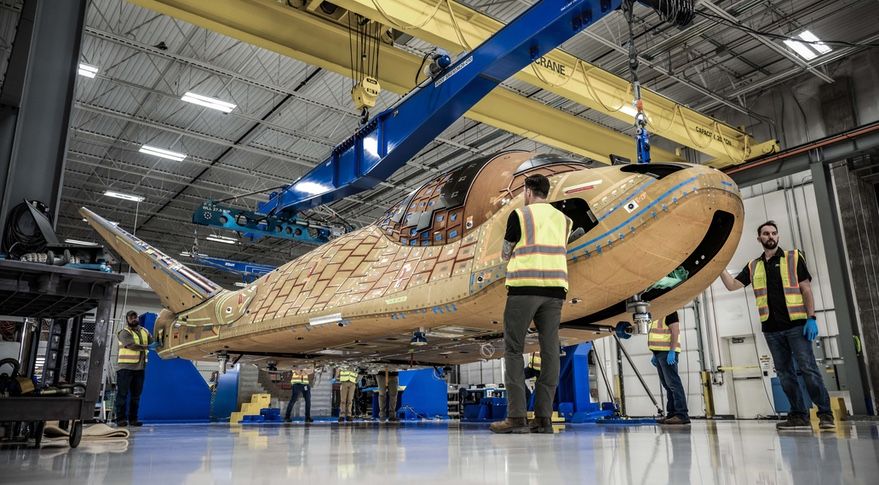
NASA astronaut Mark Vande Hei, Russian cosmonauts return safely to Earth
March 30th, 2022
Rob Navias, of NASA’s public affairs office, said on NASA’s broadcast that it was “a perfect landing, a bull’s eye touchdown.” Shortly before touchdown, he said, “the crew is feeling fine, everything is going by the book.”
Navias said that after the spacecraft Soyuz landed it “was pulled over by the wind” and was on its side. He said that “is not unusual,” adding: “The search and recovery personnel are beginning the process of safing the vehicle,” or getting it into a stable orientation.
American astronaut Mark Vande Hei was pulled out of the capsule while it was still on its side, about a half-hour after landing. He seemed in good spirits, smiling and giving the ground crews a thumbs up.
The landing marks the end of a triumphant mission for Vande Hei, whose 355 days in space set a record for the longest single spaceflight for an American. His safe return, along with his Russian counterparts Pyotr Dubrov and Anton Shkaplerov, also serves as a powerful symbol of partnership amid heightened tensions between the United States and Russia over the war in Ukraine — strain that has surfaced persistent questions about whether the relationship in space can endure.
Ever since Russia’s bloody invasion of Ukraine began more than a month ago, NASA has steadfastly maintained that the station has been operating normally and that its relationship of more than 20 years with the Russian space agency has been unaffected by the turmoil on the ground.
